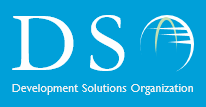Mobile money is bringing financial services to the poor around the world, and DSO is taking part in the revolution with Hummingbill, a solution that allows companies to send customers accurate, timely bills, which customers pay on their cell phones via SMS even if they don’t have a bank account or a data connection 1. As we’ve researched the market landscape for Hummingbill, the DC team has uncovered lots of reasons to be enthusiastic about the benefits of mobile money in the developing world.
Mobile money is important, because traditional means of saving, lending, and using credit are not available to many of the world’s poor. Mobile phones, however, are extremely common. In India, for example, only 5% of the villages in the country have bank branches, and 600 million people have mobile phones but no bank accounts 2. A study of EKO’s SimpliBank users in Delhi found that 39% of them didn’t have a bank account 3, and in Tanzania, only 14% of adults have a bank account 4. Bank accounts are rare, because there are no bank branches in rural areas, banking fees are prohibitively expensive, and individuals have a limited capacity to save.
Mobile money aims to fill the gap. The most common type of mobile money solution is a simple mobile wallet where users can deposit, store, send, and withdraw funds using SMS. One of the most popular systems of this type is called M-Pesa. M-PESA users exchange cash with Safaricom for an “e‐float,” worth the same amount of money. They can use SMS to transfer the e‐float to another M‐PESA account, which might be a friend or a merchant. There are no fees to exchange cash for an e-float, but there are small fees to send an e-float or withdraw funds 5. M-Pesa is extremely popular; in Kenya, mobile money transactions via M-Pesa now outnumber debit card transactions 6. The DSO team also examined EKO Simplibank, a mobile banking platform and Kopo Kopo, which helps businesses accept payments via mobile money applications 7.
But how do these developments lead to lasting change for the people who use them? Making deposits using a mobile money service is quicker and more convenient than hiding cash or making infrequent time-consuming trips to the bank, so for many users, their mobile money savings account inculcated them in the habit of savings. A study of EKO SimpliBank users found that 57 percent of users felt their ability to save had “definitely improved” and 41 percent felt it was “somewhat better” 8. With some mobile banking accounts, users also receive interest for their savings. By promoting a personal savings habit, mobile money helps the world’s poor save for investments in their future or weather small fluctuations in their income and pay consistently for the basic nutritional and educational expenses that enhance their productivity and quality of life.
As the mobile money market matures, it paves the way for more sophisticated solutions such as Hummingbill’s billing system. Hummingbill improves the process by which companies regularly bill customers and customers pay their bills, resulting in greater efficiency and fewer missed payments. Potential Hummingbill clients include schools, water suppliers, and electric companies. Because Hummingbill’s clients are typically providing basic necessities, improved service and quality in these areas has huge implications on individuals’ well-being. In some instance, mobile money promotes the success of Hummingbill, because customers feel more comfortable managing their financial affairs via their phone. In others, Hummingbill promotes the success of mobile money, because it introduces new customers to mobile money and expands the range of tasks one can accomplish on a phone. With the Hummingbill project, DSO aims to dive deeper into how these technologies are related and how they can ultimately drive development around the world.
Contributed by Caroline Roper
